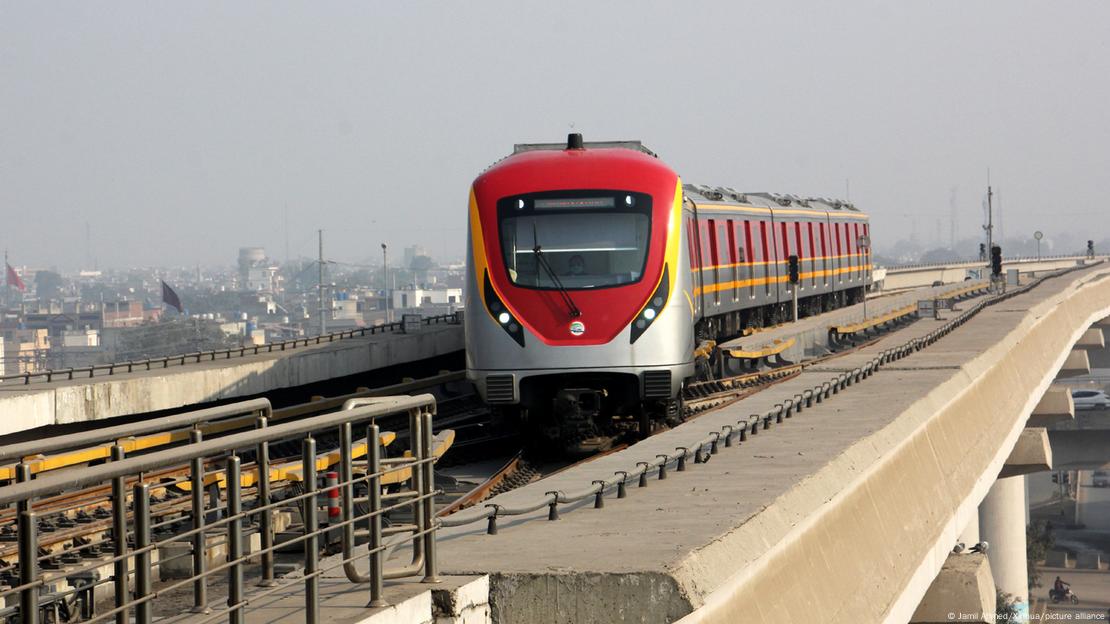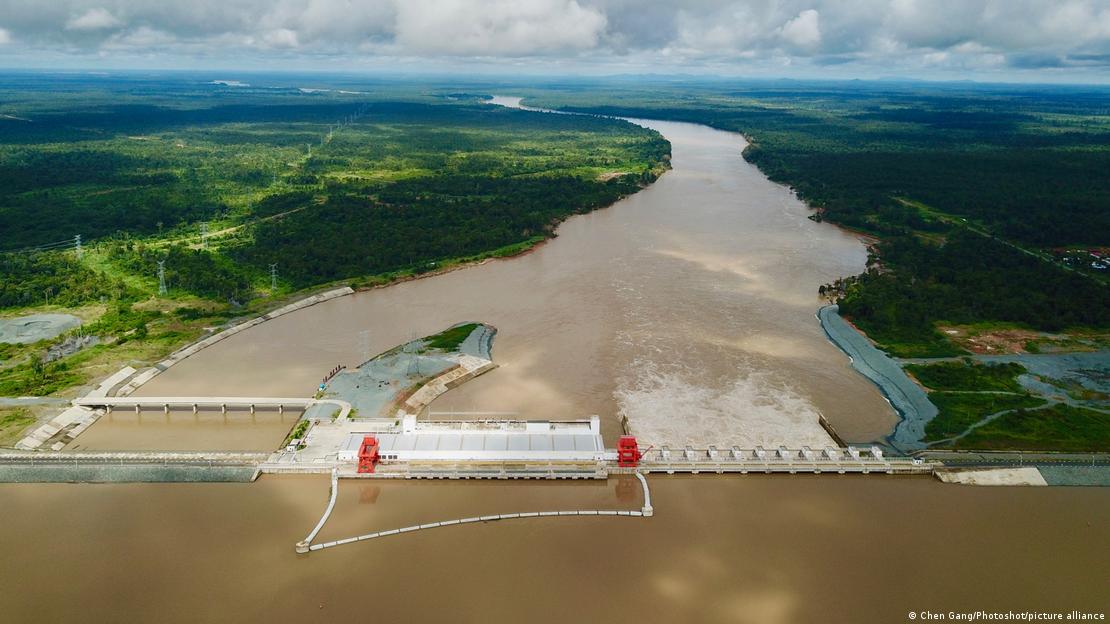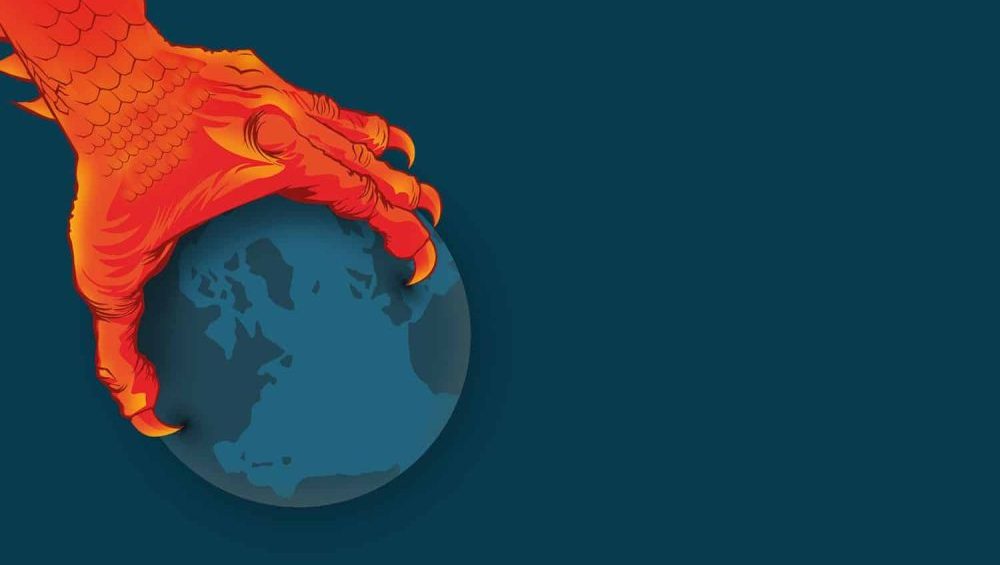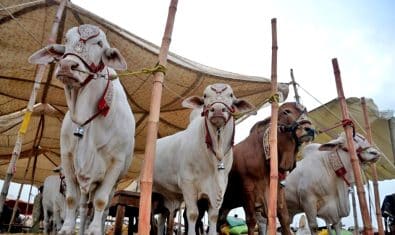China’s massive Belt and Road Initiative (BRI) — backing and often building some 21,000 infrastructure projects around the world — is widely considered the centerpiece of President Xi Jinping‘s foreign policy.
Often compared to the US Marshall Plan for Europe after World War II, Beijing has made more than $1.3 trillion (€1.2 trillion) in loans over the past decade or so to fund the construction of bridges, ports and highways in low- and middle-income countries, according to a new report.
BRI has helped restore ancient trading routes between China and the rest of the world, hence the nickname the New Silk Road. It’s also boosted Beijing’s global influence, much to the chagrin of Washington and Brussels.
Critics say BRI has landed developing nations with unmanageable debts and left a massive carbon footprint at a time when environmental protection should be taking priority. Some countries, including the Philippines, have pulled out of projects.

Others have pointed to China’s strategy of offering contracts to its own state-run firms to build infrastructure projects, often leading to opaque construction costs that countries later struggle to renegotiate.
While China has committed to continue investing billions in new projects, the day of reckoning has now arrived. The bill from the past 10 years on many of those loans has now come due.
How Many BRI Loans Have Turned Bad?
A report published earlier this month by AidData estimates that 80% of the lending made by China in the developing world is to countries in financial distress. The US-based research house estimated that total outstanding debt, excluding interest, is at least $1.1 trillion.
While the report doesn’t give a figure for how many loans have turned bad, it states that overdue repayments are soaring. The report’s authors also noted that 1,693 BRI projects are at risk and that 94 projects have either been canceled or suspended.
AidData calculated that more than half of the BRI loans have now entered their principle repayment period, at a time when global base interest rates have risen sharply, loading debtor nations with an even bigger repayment burden.
The report’s authors found that China has, in some cases, more than doubled the interest rate as a penalty for late payments from 3% to 8.7%.
When China first started offering loans to developing countries at the turn of the century, less than a fifth of projects were collateralized, compared to almost two-thirds today.
A World Bank report earlier this year found that China has already had to dole out billions in bailout loans to BRI nations.
It is now adopting a new strategy to de-risk itself from a wave of distressed loans, which includes rescue loans that help shore up the finances of the governments it has lent to and often their central banks, AidData found.

What are the US and Europe Doing to Compete With China?
AidData found that while China is spending about $80 billion annually on lending to low and middle-income countries, the United States is playing catch up.
Washington spends approximately $60 billion in similar development finance each year, due in large part to the financing of private sector projects by the US International Development Finance Corporation (DFC).
One example of US financing is the planned construction of a deep-water shipping container terminal in Sri Lanka’s Port of Colombo, costing half a billion dollars, which was announced earlier this month.
The Indian Ocean island nation is struggling to recover from a dire financial and economic crisis and its existing loan commitments to China’s BRI have hampered efforts to resolve its financial woes.
Beijing loaned cash to build Hambantota Port on Sri Lanka’s southeastern coast, along with an airport and city on reclaimed land. However, the projects aren’t profitable enough to repay the loans.
Two years ago, G7 nations launched the Build Back Better World, or B3W initiative, another attempt by the United States and its allies to counterbalance the BRI.
And just last month, the European Union held its first summit for its own Global Gateway program, which is also seen as an alternative to the BRI and hoped to help retain Europe’s influence, particularly in the Global South.
During the talks, deals worth nearly €70 billion were inked with governments across Europe, Asia and Africa. The EU’s support, which could eventually reach €300 billion, will help projects related to critical raw minerals, green energy, and transport corridors.
European Commission Chief Ursula von der Leyen said the Global Gateway would give developing countries a “better choice” for financing infrastructure projects. While she didn’t single out China’s BRI for criticism, she noted how other options for financing often come at a “high price.”
AidData found that while the US and its allies may be unable to match Beijing dollar for dollar on an ongoing basis, in part due to promising too much and being unable to deliver, the G7 did outspend China in 2021 by $84 billion.
In its report, AidData also cautioned the US and its allies against trying to compete with China’s BRI as Beijing moves from large-scale construction projects to debt collection.
However, the report’s authors said the failure of many BRI projects does offer an opportunity to lure affected countries, like Sri Lanka, back into the West’s orbit.






















Now is the battle of two elephant on world field in the middle 3rd world nation will be ruin out.